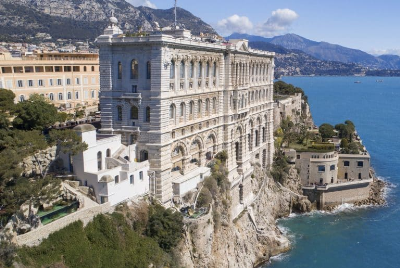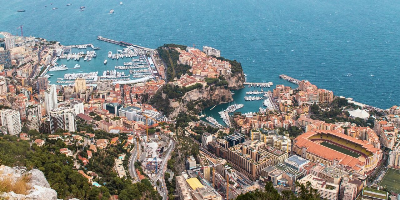
©
Океанографічний інститут Монако відкрив інтерактивну виставку 'Mediterranean 2050', що поєднує науку, технології та мистецтво, аби привернути увагу до екологічного майбутнього Середземного моря. На площі понад 1 000 квадратних метрів у Океанографічному музеї Монако відвідувачі здійснять подорож у часі – від минулого до можливого 2050 року, де морські екосистеми процвітають завдяки сучасним рішенням. Середземне море – осередок біорізноманіття з понад 17 000 видами морських істот, яке займає 7,5% світової морської фауни та 18% морської флори. Водночас воно зазнає загроз через забруднення, зміну клімату та надмірну експлуатацію ресурсів. Сьогодні лише 8,33% його територій охороняються, а ефективне управління здійснюється лише на 1,5% акваторії. Науковці Океанографічного інституту наголошують: виставка не тільки інформує, а й закликає до конкретних дій. Виставка розділена на чотири тематичні зони. 'Oceanomania' розповідає про історію та біорізноманіття Середземного моря через призму морського кабінету курйозів. Головний експонат – чотириметрова скульптура кашалота з інтерактивними проєкціями. 'Oceano Monaco' присвячена внеску Монако у морську охорону, зокрема зусиллям князів Альбера I, Реньє III та Альбера II. 'Oceano Odyssey' пропонує занурення у 2050 рік. Відвідувачі "сідають" у футуристичний батискаф та вирушають у місію 'Pelagos', де оживають відновлені морські екосистеми. Mediterranean 2050' підтримує ініціативу '30×30', яка передбачає охорону 30% світових морських та наземних територій до 2030 року. "Це наш шанс змінити майбутнє. ", – наголошують організатори.
Oceanographic Institute of Monaco opens ‘Mediterranean 2050’
The Oceanographic Institute of Monaco has launched the interactive exhibition 'Mediterranean 2050', combining science, technology, and art to draw attention to the environmental future of the Mediterranean Sea. Covering over 1,000 square meters at the Oceanographic Museum of Monaco, visitors embark on a time-travel journey—from the past to a possible 2050, where marine ecosystems thrive thanks to modern solutions. The Mediterranean is a biodiversity hotspot, home to over 17,000 marine species, accounting for 7.5% of the world’s marine fauna and 18% of its marine flora. However, it faces severe threats from pollution, climate change, and overexploitation of resources. Currently, only 8.33% of its waters are protected, and just 1.5% benefit from effective management. Scientists at the Oceanographic Institute emphasize that the exhibition is not only about raising awareness but also about inspiring concrete action. The exhibition is divided into four thematic zones. 'Oceanomania' explores the history and biodiversity of the Mediterranean through a marine curiosity cabinet, featuring a four-meter-high sculpture of a sperm whale with interactive projections. 'Oceano Monaco' highlights Monaco’s legacy in marine conservation, showcasing the contributions of Princes Albert I, Rainier III, and Albert II. 'Oceano Odyssey' immerses visitors in the year 2050, where they "board" a futuristic submersible and embark on 'Mission Pelagos', witnessing restored marine ecosystems. 'Mediterranean 2050' supports the '30×30' initiative, which aims to protect 30% of the world’s land and ocean areas by 2030. "This is our chance to change the future," emphasize the organizers.

©
1100